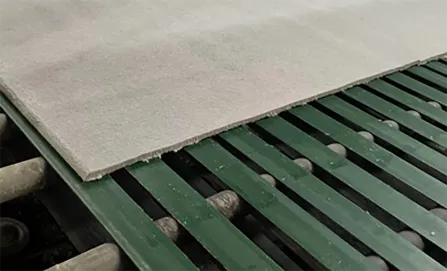- Afrikaans
- Albanian
- Amharic
- Arabic
- Armenian
- Azerbaijani
- Basque
- Belarusian
- Bengali
- Bosnian
- Bulgarian
- Catalan
- Cebuano
- Corsican
- Croatian
- Czech
- Danish
- Dutch
- English
- Esperanto
- Estonian
- French
- German
- Greek
- Hindi
- Indonesian
- irish
- Italian
- Japanese
- Korean
- Lao
- Malay
- Myanmar
- Norwegian
- Norwegian
- Polish
- Portuguese
- Romanian
- Russian
- Serbian
- Spanish
- Swedish
- Thai
- Turkish
- Ukrainian
- Uzbek
- Vietnamese
ສ.ຫ. . 15, 2024 12:37 Back to list
Exploring the Composition and Materials Used in Mineral Fiber Ceiling Tiles for Modern Interiors
What Are Mineral Fiber Ceiling Tiles Made Of?
Mineral fiber ceiling tiles are a popular choice in both commercial and residential spaces due to their acoustic performance, fire resistance, and aesthetic appeal. These tiles are primarily composed of materials derived from natural or synthetic minerals, which contribute to their advantageous properties. Understanding what these tiles are made of can help consumers make informed decisions when selecting ceiling products for their buildings.
The primary component of mineral fiber ceiling tiles is mineral fiber itself, which is often produced from materials such as gypsum, cellulose, perlite, or fiberglass. Gypsum is a naturally occurring mineral composed of calcium sulfate, which is well-known for its fire-resistant properties. When used in ceiling tiles, gypsum not only enhances fire safety but also helps in sound absorption, making spaces quieter and more comfortable.
Cellulose, derived from recycled paper or wood fibers, is another key ingredient. This material adds to the eco-friendliness of mineral fiber tiles, as many manufacturers are now using recycled content. The incorporation of cellulose helps improve the texture and insulation properties of the tiles while maintaining a lightweight structure.
Perlite is a volcanic glass that, when heated, expands and forms a lightweight granular material. It is valued for its excellent thermal insulation properties, which can enhance energy efficiency in buildings. When combined in the right ratios with other materials, perlite provides an additional level of sound absorption, further enhancing the acoustics of a space.
what are mineral fiber ceiling tiles made of

Fiberglass is another important material used in the production of mineral fiber ceiling tiles. This synthetic material offers high tensile strength and insulation properties. Fiberglass-reinforced mineral tiles tend to be more durable and resistant to moisture damage, making them suitable for humid environments like kitchens and restrooms.
The manufacturing process of mineral fiber ceiling tiles involves mixing these raw materials with water and various additives to improve their performance. The mixture is then formed into sheets or tiles, which are subjected to high temperatures and pressures to create a solid, durable product. Once formed, these tiles can be lightly coated or painted to meet aesthetic requirements and can be finished with various textures to suit different design preferences.
In addition to their diverse material composition, mineral fiber ceiling tiles are also celebrated for their sound absorption capabilities. The porous nature of the mineral fibers allows them to absorb sound waves, reducing noise levels in spaces like offices, schools, and restaurants. This characteristic makes them an ideal choice for environments where acoustic control is essential.
Another notable characteristic of mineral fiber ceiling tiles is their fire response rating. Due to the inherent properties of the mineral components, these tiles are classified as non-combustible and can help slow the spread of fire, providing occupants with additional time to evacuate safely. This makes them particularly appealing for commercial buildings where fire code compliance is critical.
To summarize, mineral fiber ceiling tiles are composed of various materials, including gypsum, cellulose, perlite, and fiberglass. Each material contributes unique properties that enhance the performance, durability, and safety of the tiles. With benefits such as sound absorption, fire resistance, and eco-friendliness, mineral fiber ceiling tiles prove to be a versatile and valuable choice for a wide range of applications, making them a staple in modern building design. Whether renovating a home or designing a new office, understanding the composition of these tiles is essential in selecting the best ceiling solution.
-
Mineral Fiber Ceiling Tiles Embossed Surface PatternNewsAug.05,2025
-
Mineral Fiber Board Xingyuan Vision for Better SpacesNewsAug.05,2025
-
Drop Down Ceiling Tile Office Use FitNewsAug.05,2025
-
PVC Gypsum Ceiling White Base ColorNewsAug.05,2025
-
Access Panel on Ceiling Xingyuan Integrity EthicNewsAug.05,2025
-
Ceiling Trap Doors Fire Resistant DesignNewsAug.05,2025







